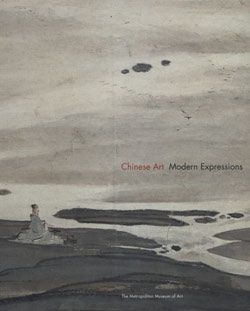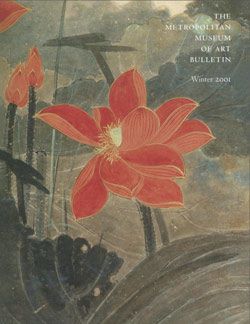Seascape at Beidaihe
Wu Guanzhong Chinese
Not on view
In 1936 Wu Guanzhong enrolled in the Hangzhou Academy of Art, where he studied Western oil painting under Lin Fengmian (1900–1991). From 1947 to 1950 he was in Paris, immersing himself in the works of Cézanne, Gauguin, and Matisse before returning to China as a lecturer at the Central Academy of Fine Arts in Beijing. Wu's modernism conflicted with the views of the academy's director and with the Social Realist style of Soviet models and he was trans-ferred to another post. During the Cultural Revolution he was sent into the countryside for three years and did not paint. Wu began working in Chinese ink on paper only after 1972.
In this work, inspired by Mao Zedong's poem about the summer resort of Beidaihe, Wu translated actual scenery into a composition that verges on abstraction. Except for the boats that dot the horizon and the black silhouettes of protruding rocks, the surface is given over to a mesmerizing depiction of waves. Wu painted out some of his ink lines with opaque white—something a traditional Chinese artist would never do—to prevent linear patterns from predominating over the illusion of light reflected from the water. In contrast to the literati objective of capturing the essence of the natural world through abstract calligraphic brushwork, Wu exploited the tension between abstraction and the vivid evocation of three-dimensional forms to create an intensely personal encounter with nature.
This image cannot be enlarged, viewed at full screen, or downloaded.
This artwork is meant to be viewed from right to left. Scroll left to view more.




